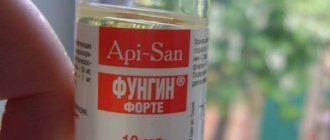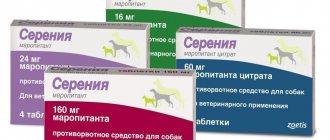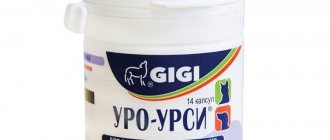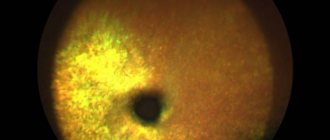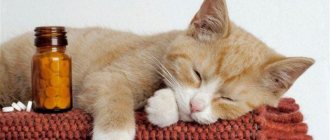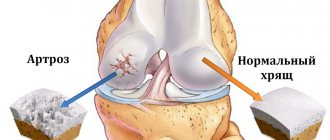Composition and action
The basis of the drug is ketoprofen, a propionic acid derivative that has antipyretic, analgesic and anti-inflammatory effects. Once in the body, after 30-40 minutes the active substance reaches its maximum concentration in the blood plasma, quickly penetrates through the bloodstream into all organs and tissues, acting on the source of pain and inflammation.
The manufacturer offers three types of tablets, differing in the content of ketoprofen: 5, 10, 20 mg. For cats, it is more convenient to use a drug with a minimum concentration: to avoid exceeding the therapeutic dose.
Ketoprofen inhibits destructive processes in joints and soft tissues during chronic inflammation, and during acute inflammation it quickly relieves pain, therefore Ketofen is actively used for injuries, acute inflammatory processes in joints, and musculoskeletal organs. In case of articular syndrome, it relieves pain during movement and rest, reduces morning stiffness, swelling of the joints, and increases the motor activity of the sick animal. A noticeable effect appears after a week of taking the drug.
Instructions for use of Ketoprofen
The doctor prescribes the dosage of tablets individually; it is important to take into account the severity of the disease. For adult patients, it is recommended to start therapy with 300 mg. per day, divided into 2-3 times. For the retard form, the use of 150 mg is indicated. drug every 12 hours. In granules, a single dosage is 80 mg. 2-3 times a day. Before use, the granulated powder must be dissolved in 100 ml. clean water.
Ketoprofen and its analogues can be prescribed in different forms. Combination with centrally acting analgesics is acceptable.
Suppositories must be administered rectally at 100-200 mg daily. Administration of the drug intramuscularly and intravenously: the daily dosage is 160 mg, which is administered once or divided into 3 procedures.
This medication is also available in the form of cream, ointment and gel. These dosage forms should be used with caution and for no more than two weeks.
If the patient suffers from alcohol dependence, diabetes mellitus, chronic renal failure, heart disease, ulcers, anemia, increased blood pressure, then prescribe ketoprofen, as these instructions say, and its analogues must be prescribed with extreme caution. Such patients require medical supervision and monitoring of key indicators.
If the patient has a history of allergic reactions to medications, then therapy with non-steroidal anti-inflammatory drugs should be prescribed in extreme cases.
Purpose
The drug exhibits the maximum therapeutic effect in relation to acute and chronic diseases of the locomotor system, due to which Ketofen is used in the treatment of:
- arthritis;
- arthrosis;
- injuries - fractures, bruises, dislocations, ruptures and sprains;
- herniated discs, etc.
Due to its pronounced analgesic effect, the drug can be used to relieve pain and inflammatory reactions after surgical interventions.
Important!
Ketofen has contraindications for use, so it cannot be used for self-medication.
In addition, the drug can be prescribed to relieve pain of various types, including:
- to relieve post-traumatic pain;
- with myalgia - muscle pain;
- for renal colic;
- in gynecological, oncological, neurological veterinary practice.
Arthritis is a group of joint inflammations often diagnosed in cats. This is a disease that most often affects middle-aged and elderly animals, but young pets are no exception. Pathology can be caused by various reasons:
- injuries;
- genetic predisposition (the risk group includes Maine Coons, Scottish Folds and exotics);
Joint damage can be inflammatory or degenerative in nature. In the first case, the pathological process develops in the synovium. The following types of inflammatory arthritis are distinguished:
- rheumatoid, caused by herpes viruses, retroviruses, mycoplasmas;
- infectious – develops when pathogenic bacterial microflora penetrates the joint. The cause may also be viruses and helminthic infestations;
- reactive – secondary damage to the joint, developing against the background of general intoxication of the body, accompanies infections of the gastrointestinal tract and genitourinary system;
- metabolic – develops when metabolic processes in the animal’s body are disrupted; the cause may be a lack of calcium and phosphorus obtained from food, heterochromatosis, etc.
When the superficial part of the joint is damaged, degenerative arthritis can develop. Among them are:
| Traumatic | Consequence of mechanical injuries. With sprains and bruises, hematomas occur, which cause bleeding from the joint capsule and inflammation of a non-infectious nature; |
| Functional | A type of traumatic injury that can develop with increased loads on the joints (for example, when falling from a great height and landing on the paws); |
| Osteoarthritis | a pathology that develops against the background of physiological wear and tear of the joints. The disease is manifested by the proliferation of bone tissue, which leads to loss of joint mobility and elasticity. In older animals, you can hear a characteristic cracking sound in the joints when walking. |
All inflammatory processes are accompanied by pain. The pet tries to limit mobility, lie down more, without loading painful joints. Ketofen not only relieves pain, but has a therapeutic effect on the source of inflammation, preventing it from spreading to neighboring tissues.
Overdose of Ketoprofen
When taking an overdose, lethargy, a gag reflex, pain in the abdomen, dizziness and nausea may develop. To alleviate the patient's condition, it is necessary to perform gastric lavage and prescribe maintenance therapy to relieve symptoms.
Instructions for use apply to Russian and imported types of the drug Ketoprofen.
Cats are very active and curious animals. Young cats try to explore everything, so they climb tall trees, cabinets and curtains. Experienced cats try to catch a bird or fly, putting themselves in danger. Such situations often lead to various types of injuries. And sometimes diseases (for example, joints) arise due to old age. One of the most popular drugs for the treatment of diseases of the musculoskeletal system is Ketofen.
Dosage
When calculating the required dose of a drug, veterinarians take into account the weight of the pet. Tablets should be given once a day, preferably in the morning feeding. You can crush the tablet and add it to the food, but it is better to forcefully give the medicine - after waiting for the pet to swallow the pill.
For 1 kg of cat weight, 1 mg of ketoprofen (active substance) should be given. In order to avoid an overdose, you should carefully split the tablet. The course of treatment is also determined by the attending physician; it depends on the severity of the pathology and the condition of the animal and usually lasts at least 3-5 days.
Feedback from pet owners
The medicine was prescribed to the cat. I got into a fight, lay there all day, and cried. After an examination, the veterinarian prescribed Ketofen injections, vitamins, and ointment for wound healing. On the first day the cat did not even resist the injection. In the evening he felt sick, but his activity returned. He started eating and playing. In the morning all his dinner was on the floor.
I went to the vet again. They examined my Vasily and said that this is a normal reaction to the medicine, and it is listed in the list of side effects. We gave 2 more injections. I was worried about the cat, he was constantly throwing up, but by the evening of the 3rd day he began to run around the house, play around, and even came for a hug. The drug helped, there was no need to take additional pills.
Svetlana, 57 years old
Our Scotsman had to treat his arthritis with the help of the chondroprotector Artroglycan; Ketofen was used as an anesthetic for the first 3 days. Within a day, the cat became happier and began jumping on the furniture. The only drawback of the medicine is that it causes persistent vomiting in the animal.
Renat, 29 years old
The cat is already old, but has always been cheerful, and has never been to the vet. When he stopped leaving the house, it was attributed to his age, but gradually he began to try to avoid any movement. The doctor diagnosed arthritis, prescribed tablets and 3 injections of Ketofen to relieve pain.
Our old man started running around the house within 2 days.
They took the pills for another month, now you can’t get enough from the street when you come back. Anatoly, 37 years old
Restrictions
The medicine should not be given to cats with hypersensitivity to ketoprofen (it is also included in other non-steroidal anti-inflammatory drugs), as well as to animals:
- suffering from peptic ulcer disease;
- severe form of renal failure;
- hemorrhagic syndrome;
- heart pathologies.
Limitations include the simultaneous use of Ketofen with other NSAIDs, anticoagulants, and diuretics.
An overdose can cause vomiting, increased salivation, and stomach bleeding. No other negative consequences of taking the drug were identified.
Contraindications.
It would seem that cats are not people. They do not suffer from diseases that may cause contraindications to taking certain medications. They still suffer so much. If Kotofey is diagnosed with a duodenal ulcer, hemorrhoids, stomach ulcer or kidney problems, you will have to give up Ketofen. It also happens: the owner gave the pet a pill, and it began to salivate. Then the incessant vomiting began. “Matroskina” in an armful and rinse the stomach, the sooner the better for the tailed one. There are especially delicate people who are allergic to everything possible. We noticed red spots in the “patient’s” ears; the use of “Ketofen” was immediately stopped.
Cat injection. Common mistakes
Precautionary measures
Be sure to read the instructions included with the tablets or solution. Observe the following rules:
- Wash your hands after handling the product
- if you are prone to allergies, use gloves;
- keep the medicine away from children;
- do not use the drug after the expiration date;
- store it in a dark place at a temperature no higher than 30 degrees.
After opening the package, use Ketofen within 28 days.
Analogues of the drug according to indications for use
The following drugs are analogues of Ketofen:
Photo gallery: Ketofen analogues
Table: comparison of Ketofen analogues
| Name | Developer | Release form | Active substance | Action | Contraindications | Best before date | Price |
| Ainil | Industrial veterinaria SA (Spain) | Injection | Ketoprofen |
|
| 2 years | From 1100 rubles per 100 ml |
| Flexoprofen | "VIC - animal health" (Russia) |
| 3 years | From 260 rubles for 10 ml | |||
| Nalbuphine | Federal State Unitary Enterprise "Moscow Endocrine Plant" (Russia) | Nalbuphine hydrochloride |
| Individual intolerance to the components of the drug | 2 years | From 850 rubles for 10 ampoules (5 ml each) |

